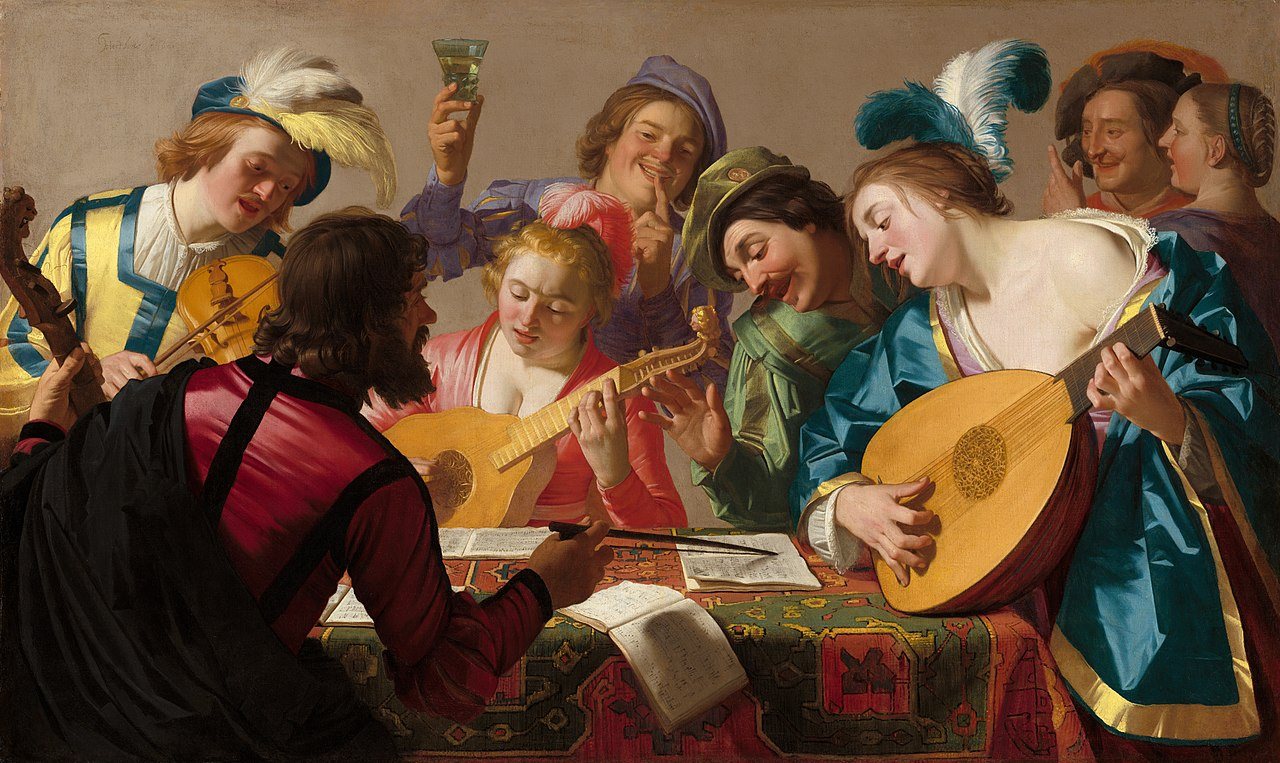The spirit of change that was transforming so much of art and culture in the Renaissance also touched the musical styles of the period, the most important of which was polyphony, or the blending of several individual melodies, which ultimately led to the development of harmony.
By about 1500, polyphony included vocal orchestration, or the grouping of contrasting voices. This gave not only depth to the music and the singing, but also a rich texture, since various melodies could enter, depart and re-enter in a piece of work.
As well, this interaction of melodies was given greater color by the use of different rhythms for each of these melodies. This combination of various individual melodies to form a single musical mode reflected the ideals of the Renaissance, which always sought perfection and unity.
During this time, choirs were relatively small and consisted of 26 singers, exclusively male, in which the soprano parts were sung by boys or men who could sing falsetto, or a higher pitched tenor. Also, instruments began to be introduced as accompaniments to the choir. Only the choir of the Sistine Chapel was strictly forbidden to use instruments in its choral singing.
The Renaissance also saw the separation of music into religious and secular forms. The most important religious styles were the Mass and the Motet.
The Mass referred to the musical setting of that part of the Church worship known as the Ordinary, which consisted of five sections for which music was needed. The words of the Ordinary provided the text that Renaissance composers could set to music.
The Motet was the musical setting of those parts of the Church service that were not part of the Ordinary. Usually, the words used for Motets were familiar to the worshippers and provided composers with the opportunity to reach a profound expression that would be both moving and meaningful.
In fact, the composer sought to interpret the truth of the words through music. It was the motet that brought about a unique change in music – the unity of words and melody. It is something that we take for granted today, but we have to keep in mind that before the Renaissance, music always took a secondary role to the words. In the sixteenth century and onwards, both words and music were equally important.
The secular version of the Motet was the Madrigal, which was an intimate form of music, performed by a small group of singers, both male and female, accompanied by a lute. The Madrigal was in a sense chamber music, since it was created to provide entertainment for members of the aristocracy. Some famous madrigalists are Carlo Gesualdo (ca. 1560-1613) and Claudio Monteverdi (1567-1643) in Italy; while in England we have William Byrd (1543-1623), Thomas Morley (1558-1603), and Orlando Gibbons (1583-1625).
Many important composers flourished in this era, such as Guillaume Dufay (ca. 1400-1477), who was a popular French composer, and was the first one to write large-scale Masses for four voices. These massive works, which often reworked a famous melody, began a style that was to remain popular throughout the fifteenth and sixteenth centuries.
He is also famous for writing beautiful instrumental pieces, such as “Se la face ay pale” and “L’Homme armé. “When, in 1420, the dome of the cathedral of Florence, built by Filippo Brunelleschi (1377-1446), was dedicated, it was Dufay who was commissioned to compose a special a dedicatory motet, which he called “Nuper rosarum flores” (“The Flowers of Roses”).
Josquin des Prez (ca. 1440-1521) was born in what is now Belgium, but moved to Italy, where he became the court musician to the Dukes of Milan and Ferrara, and later served in the Papal Chapel at Rome. He was very famous in his own time, and was often called the “Michelangelo of music,” and Martin Luther referred to him as “the master of notes.” Josquin’s music was effortless, which made full use of the flexibility of polyphony, while creating beautiful melodies. His most famous work is the “Missa Pange Lingua.”
Palestrina (ca. 1525-1594) was another renowned composer whose name is often used to illustrate the music of the Renaissance, since he was regarded, in his own time, as creating the purest and the most perfect melodies and songs. A careful balance of ascending and descending phrases that gives a smooth flow to his music marks his work.
A famous contemporary of his was Lassus (1532-1594), a prolific composer, who created some two thousand works, both religious and secular. He transformed the contrasting melodies of polyphony into expressive harmony. He was a master of matching the mood of the words with appropriate music, and he could write songs that were deeply moving as well as those that were humorous.
His fame was such that the Emperor Maximilian II made him a noble, and he was much favored by Pope Gregory XIII and King Charles IX of France. One his most famous works is the religious piece entitled, “Tristia est anima mea” (“Sorrowful is my soul”), which was published in 1565.
It is often said that the Renaissance was a time of immense musical variety and richness, and it was one of the few times in musical history that so many acknowledged masters flourished at the same time.
